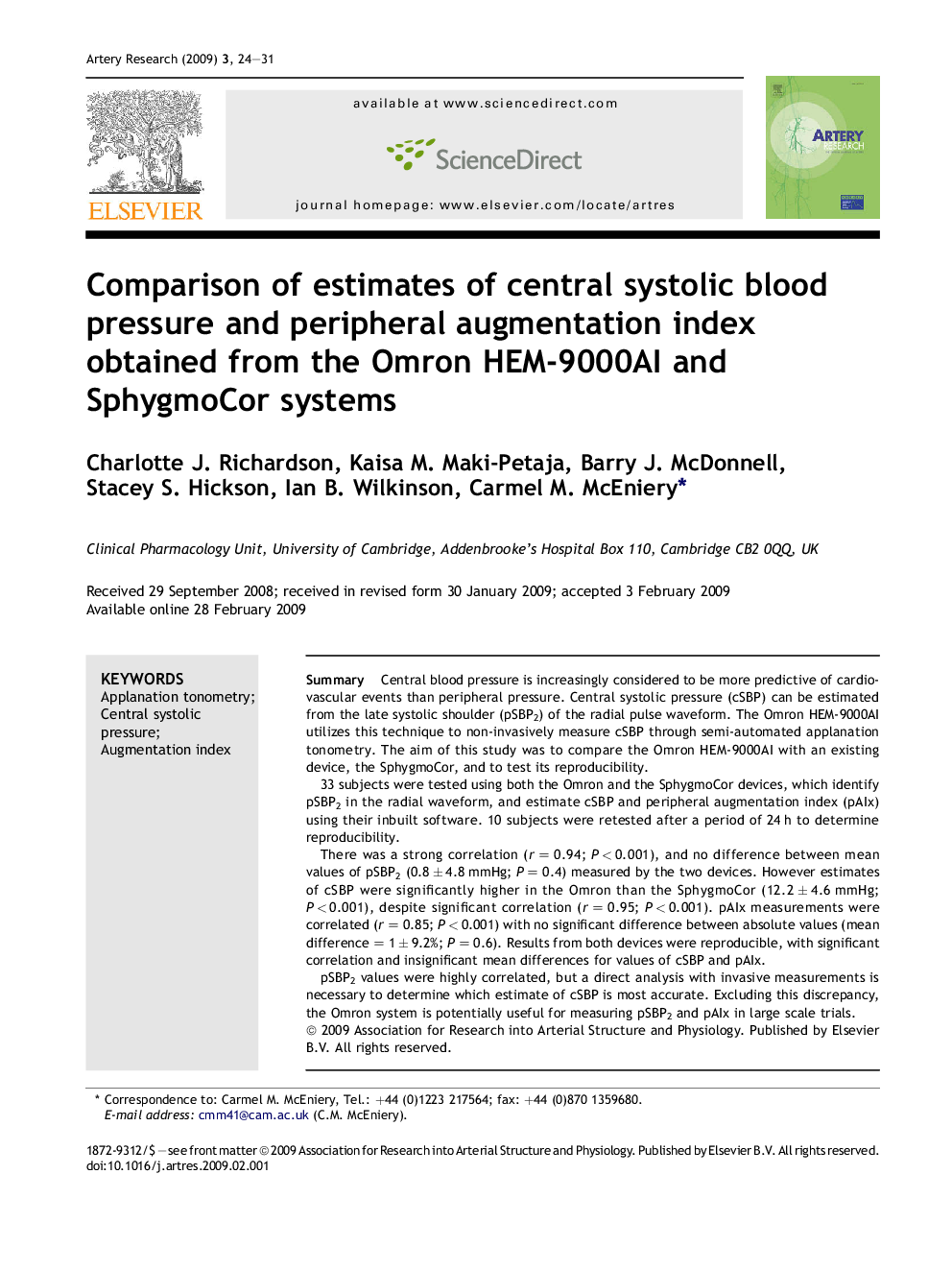| Article ID | Journal | Published Year | Pages | File Type |
|---|---|---|---|---|
| 2892286 | Artery Research | 2009 | 8 Pages |
SummaryCentral blood pressure is increasingly considered to be more predictive of cardiovascular events than peripheral pressure. Central systolic pressure (cSBP) can be estimated from the late systolic shoulder (pSBP2) of the radial pulse waveform. The Omron HEM-9000AI utilizes this technique to non-invasively measure cSBP through semi-automated applanation tonometry. The aim of this study was to compare the Omron HEM-9000AI with an existing device, the SphygmoCor, and to test its reproducibility.33 subjects were tested using both the Omron and the SphygmoCor devices, which identify pSBP2 in the radial waveform, and estimate cSBP and peripheral augmentation index (pAIx) using their inbuilt software. 10 subjects were retested after a period of 24 h to determine reproducibility.There was a strong correlation (r = 0.94; P < 0.001), and no difference between mean values of pSBP2 (0.8 ± 4.8 mmHg; P = 0.4) measured by the two devices. However estimates of cSBP were significantly higher in the Omron than the SphygmoCor (12.2 ± 4.6 mmHg; P < 0.001), despite significant correlation (r = 0.95; P < 0.001). pAIx measurements were correlated (r = 0.85; P < 0.001) with no significant difference between absolute values (mean difference = 1 ± 9.2%; P = 0.6). Results from both devices were reproducible, with significant correlation and insignificant mean differences for values of cSBP and pAIx.pSBP2 values were highly correlated, but a direct analysis with invasive measurements is necessary to determine which estimate of cSBP is most accurate. Excluding this discrepancy, the Omron system is potentially useful for measuring pSBP2 and pAIx in large scale trials.
